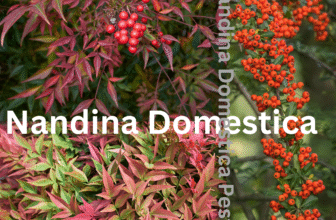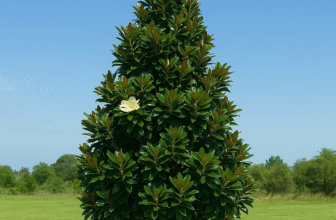Calathea Australia Guide, With their paddle-shaped leaves, bold patterns, and striking colour combinations, Calathea plants are a favourite choice for adding a lush, tropical feel to any space. Commonly used for indoor decoration in Australian homes and offices, they bring instant vibrancy and elegance.
This guide covers everything about Calathea in Australia — origins, unique traits, care tips, problem fixes, and styling ideas for homes and offices.
What Is a Calathea? (Introduction to the Genus)
Calathea plants, from the Marantaceae family (alongside Marantas and Stromanthes), are native to Central and South America, especially Brazil’s rainforests. In the wild, they thrive in shaded, humid jungles — making them stunning but sometimes challenging indoor plants in Australia’s drier climates.
Calathea, often called the prayer plant in Australia, is unique for its nyctinasty—leaves that open during the day and fold at night like hands in prayer.”
Why Are Calathea Plants So Popular in Australia?
There’s no doubt that Calathea has become one of the most sought-after indoor plants across Australia in the past few years. But why?
- Striking Patterns: Each variety has its own signature leaf design — from zebra stripes to rosy hues.
- Pet-Friendly: Unlike some indoor plants, Calathea is non-toxic to cats and dogs, which is a huge relief for Aussie pet owners.
- Compact Growth: Most species don’t grow too tall, making them perfect for apartments in Sydney, Brisbane, or Melbourne.
- Decor Appeal: They instantly elevate home décor, blending well with minimalist, boho, or jungle-style interiors.
According to the Royal Horticultural Society (RHS), many Calathea cultivars have even won Awards of Garden Merit thanks to their beauty and adaptability indoors.
Types of Calathea You’ll Love
There are over 200 recognised species of Calathea, though not all are common in Australia. Below are some favourites you’ll likely see in nurseries, online plant shops, or styled interiors.
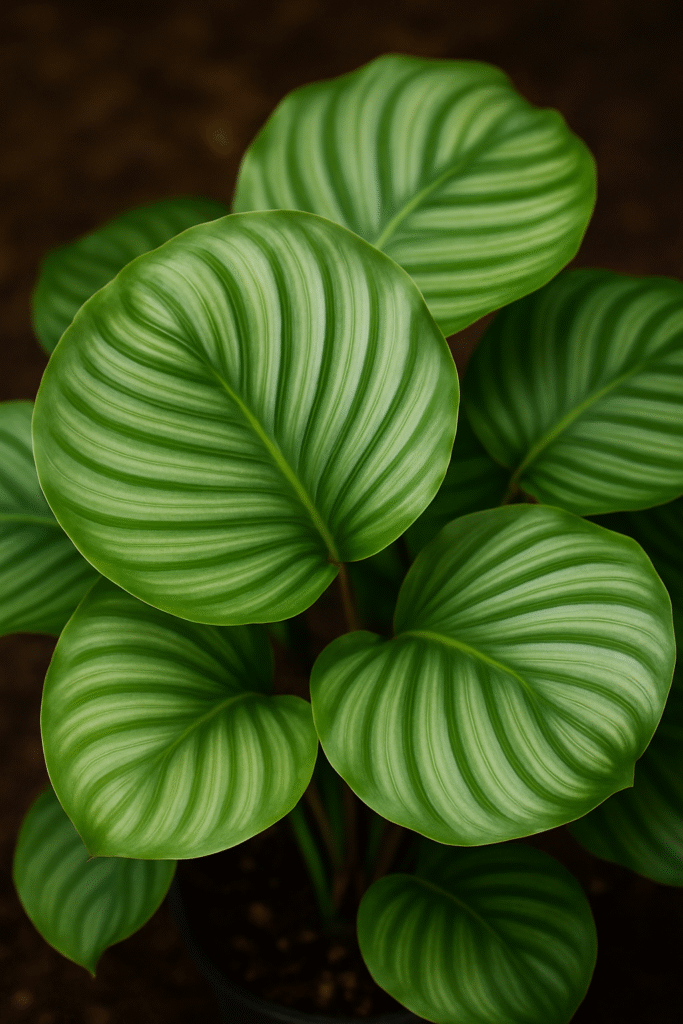
1. Calathea orbifolia
- It is known for its large, round leaves striped with silvery bands.
- A statement plant that needs a bit of space.
- Sensitive to low humidity, but worth the effort.
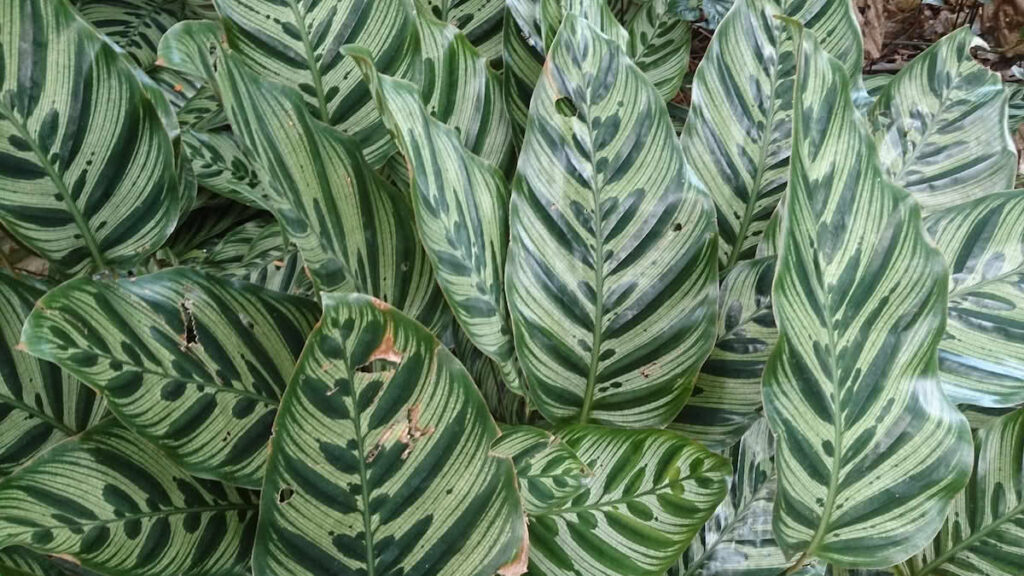
2. Makoyana Calathea (Peacock Plant)
- Nicknamed the peacock plant for its feathery green and cream patterns.
- The undersides are deep purple, adding contrast.
- Native to Brazil, but now a common indoor favourite worldwide.
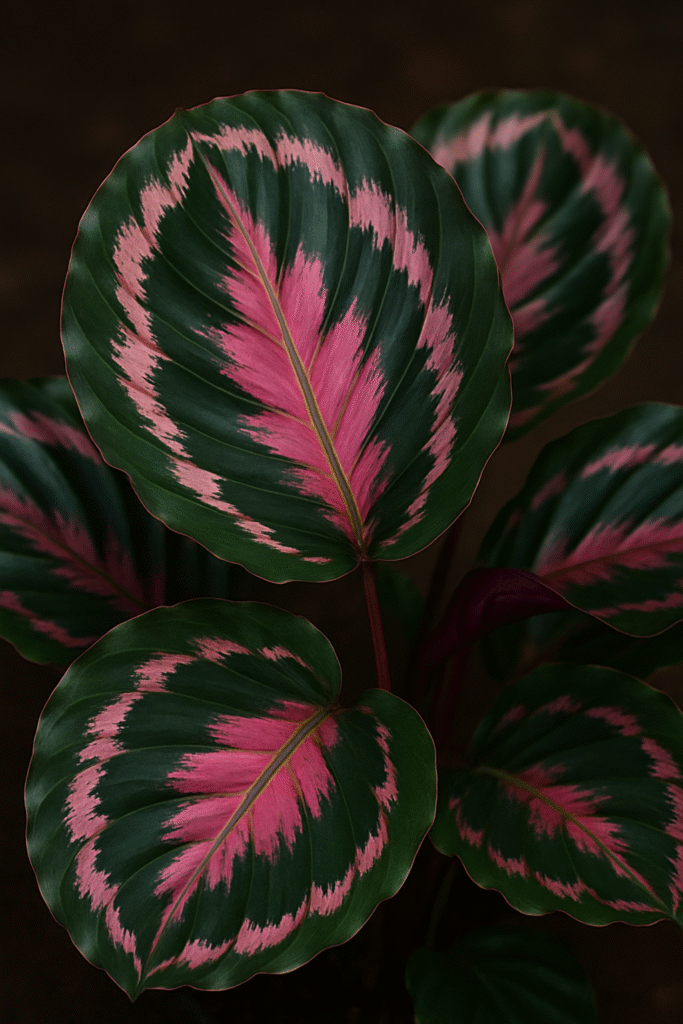
3. Calathea roseopicta
- Features dark green leaves with pinkish centres and purple undersides.
- Popular among Aussies who love colourful plants.
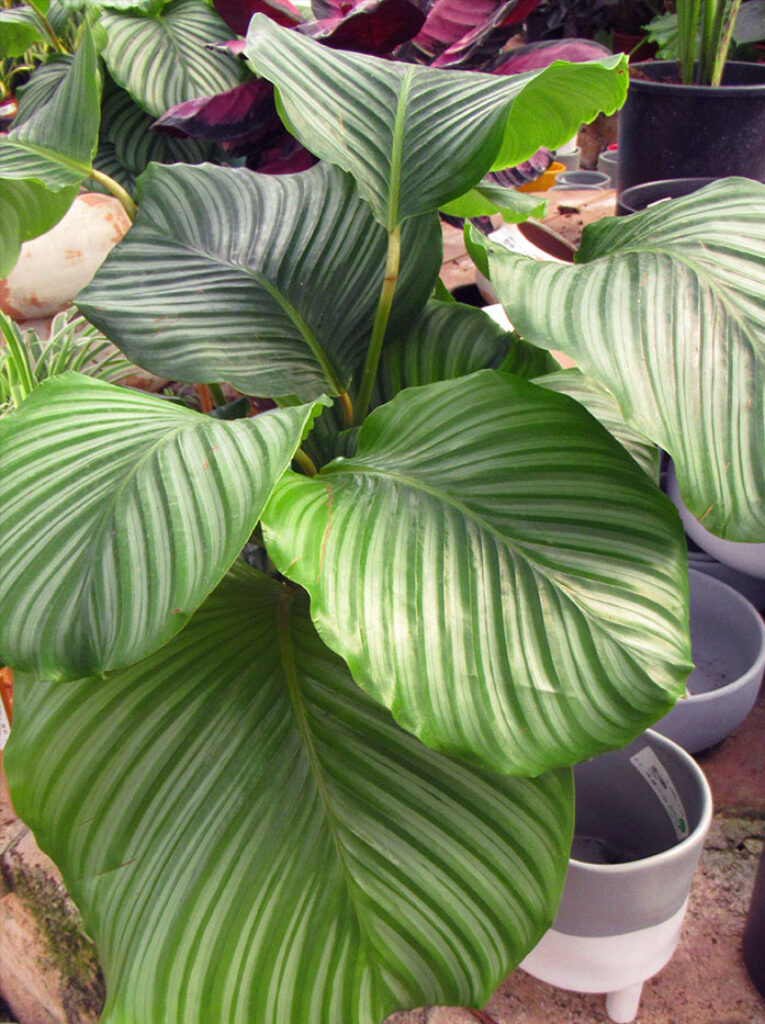
4. Calathea zebrina
- Aptly called the zebra plant because of its velvety green leaves with light stripes.
- Adds texture and drama to indoor spaces.
5. Australian Calathea lancifolia (Rattlesnake Plant)
- Long, wavy leaves patterned with dark green markings.
- Hardy compared to other Calathea species.
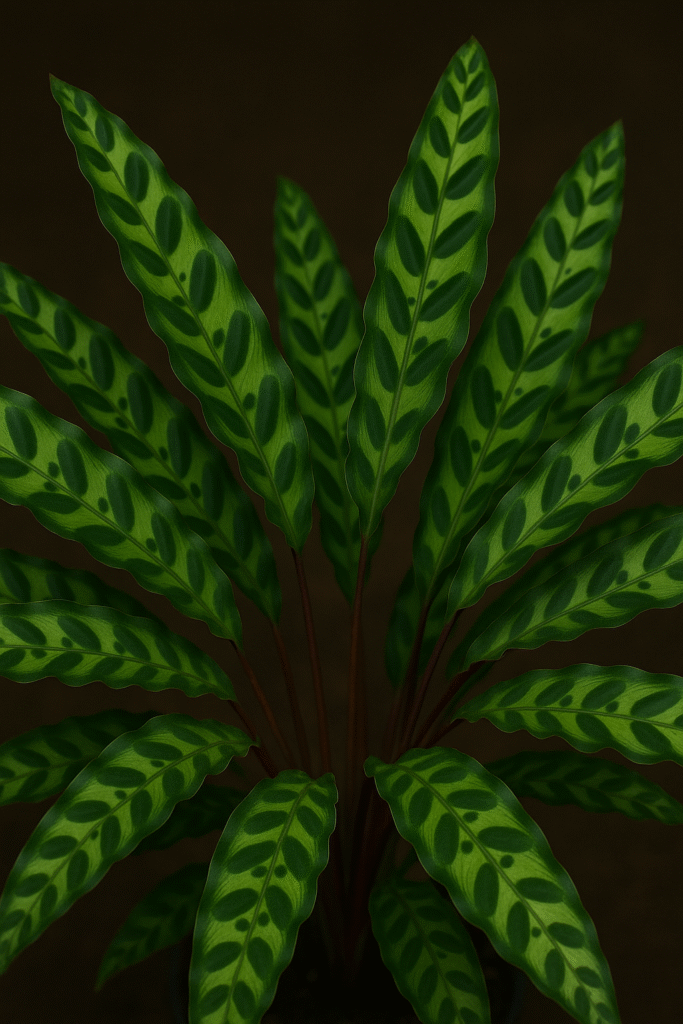
6. Crocata Calathea (Eternal Flame)
- This plant is unique for its orange flowers, which contrast with its lush foliage.
- A rare bloomer indoors, but eye-catching when it does.
Each type brings a different personality, so many Australian plant parents end up collecting multiple varieties.
How to Grow Calathea, Calathea Australia Guide
Light Requirements
Calathea plants love bright, indirect light. Direct sunlight will scorch their leaves, leaving brown patches. Think of where they grow naturally — under forest canopies — and try to mimic that at home.
Tip: North-facing windows in Australia usually provide the best balance of light without too much intensity.
Soil Needs
Calathea prefers a well-draining but moisture-retentive soil. A good indoor mix is:
- 2 parts premium potting mix
- 1 part perlite or pumice
- 1 part coco coir or peat moss
This ensures roots stay moist but not soggy.
Watering
This is where many plant parents struggle. Calathea likes consistently damp soil, but not waterlogging. Use room-temperature, filtered, or rainwater if possible, since tap water in Australia often contains fluoride and chlorine, which can damage the leaves.
Golden rule: Water when the top 2–3 cm of soil feels dry.
Humidity
Being tropical, Calatheas thrive in 60–70% humidity. In drier areas (like Adelaide or Perth), you may need a humidifier, pebble tray, or to group plants together. Bathrooms with good light are also perfect homes for Calathea.
Temperature
Keep them in the 18–26°C range. Cold draughts or sudden temperature drops will stress the plant.
Fertilising
During the active growing season (spring and summer in Australia), feed monthly with a balanced liquid fertiliser diluted to half strength. Avoid over-fertilising as Calathea roots are sensitive.
Common Calathea Problems in Australia (and Fixes)
Fix yellow leaves and more with our Calathea Australia Guide.
Even with good care, Calatheas are known for being a little “fussy.” Here are the main problems you might encounter:
Yellow Leaves
- Usually caused by overwatering or poor drainage.
- Solution: Check soil moisture, improve aeration, and reduce watering frequency.
Browning Leaf Edges
- A sign of low humidity or water quality issues.
- Fix: Increase humidity and use filtered/rainwater instead of tap water.
Drooping Leaves
- It could be due to underwatering, cold stress, or root issues.
- Check soil moisture and room temperature.
Leaf Curling
- Typically, from low humidity or too much direct sun.
- Relocate to a more shaded area and mist lightly.
Pests
Calathea can attract spider mites, mealybugs, and aphids. Keep an eye out for tiny webs or sticky residue.
- Use neem oil, insecticidal soap, or a shower rinse to manage pests naturally.
Styling With Calathea Indoors
Beyond plant care, Calatheas are stunning décor pieces. Here are some ideas:
- Living Room Corners: Larger varieties like orbifolia or zebrina make bold statement plants.
- Bathrooms: Perfect for adding a tropical vibe while enjoying the higher humidity.
- Home Offices: Their calming patterns can reduce stress and boost focus.
- Mixed Planter Displays: Pair with ferns, peace lilies, or monsteras for layered greenery.
- Shelves & Stands: Smaller Calatheas look fantastic on plant stands where their patterns can be admired at eye level.
Design tip: Pair them with neutral pots (white, terracotta, or stone) to let the foliage take centre stage.
Are Calatheas Safe for Pets?
Yes! According to the ASPCA, Calathea is non-toxic to cats and dogs. This makes them a great choice for Aussie households where furry friends like to nibble on leaves.
Where to Buy Calathea in Australia
You can find Calathea plants at:
- Local nurseries and garden centres.
- Online plant shops (e.g., The Plant Society, Bunnings, or local Etsy sellers).
- Plant swaps and Facebook marketplace groups.
Prices vary depending on the species and size, but expect anywhere from $25 for small pots to $100+ for mature plants.
Calathea vs. Maranta: What’s the Difference?
Many people confuse Calathea with Maranta, since both are called prayer plants. The difference lies in:
- Leaf texture: Calathea leaves are usually larger and more patterned.
- Growth habit: Marantas often trail, while Calatheas grow more upright.
- Care needs: Both like humidity, but Marantas are generally easier to manage indoors.
Quick Tips for Success with Calathea
Need success tips? This Calathea Australia Guide has solutions.
- Use rainwater or filtered water.
- Place in bright, indirect light.
- Keep humidity high.
- Fertilise lightly in spring and summer.
- Don’t panic over a few yellow or brown leaves — it happens!
FAQs About Calathea in Australia
Can Calathea grow outdoors in Australia?
In warm, frost-free areas like northern Queensland, yes. But in most of Australia, they’re safer as indoor plants to avoid cold snaps and dry air.
Why are my Calathea leaves curling?
Low humidity or too much sunlight are the usual culprits. Shift to bright, indirect light and increase humidity with a pebble tray, humidifier, or gentle misting.
Do Calathea plants flower indoors?
Some do—like Calathea crocata (Eternal Flame)—but most are kept for their striking foliage rather than their blooms.
Final Thoughts
Calatheas are more than just trendy plants — they’re living pieces of art that bring colour, texture, and life into Australian homes. Yes, they have a reputation for being fussy, but with the right care, they’ll reward you with vibrant foliage and their signature “prayer” movements.
If you’re ready to add something special to your collection, a Calathea might be the perfect choice.


